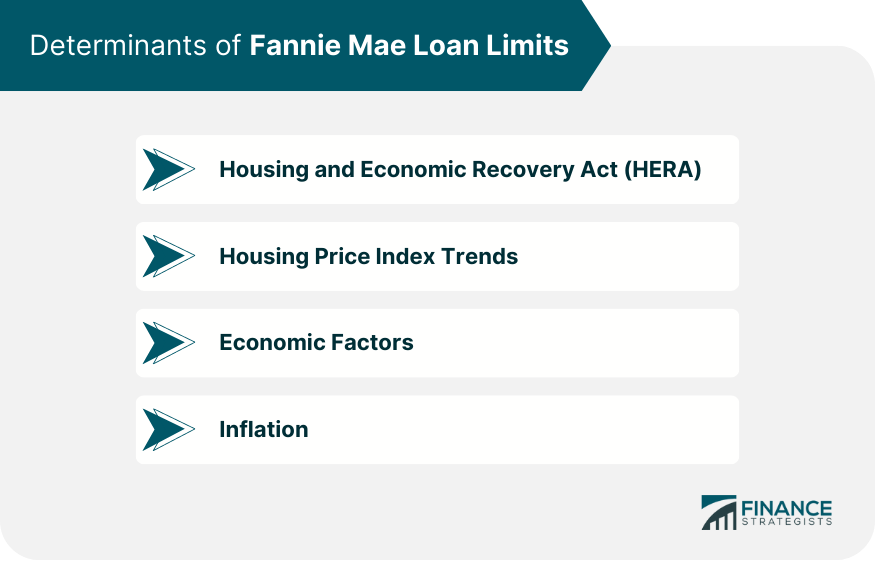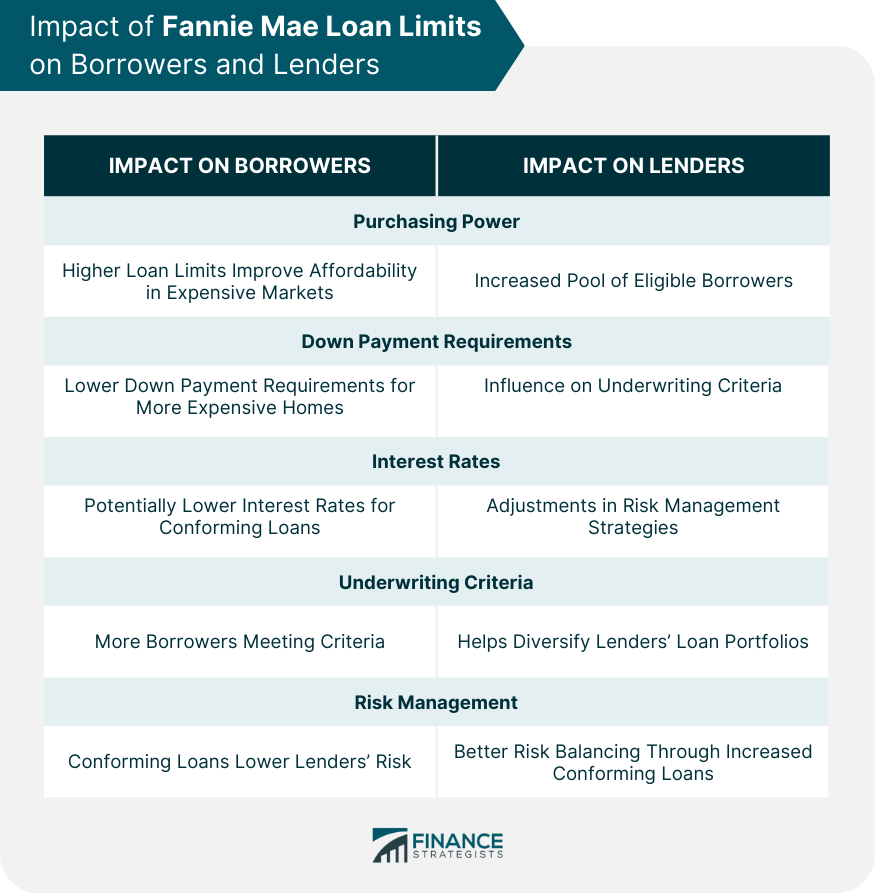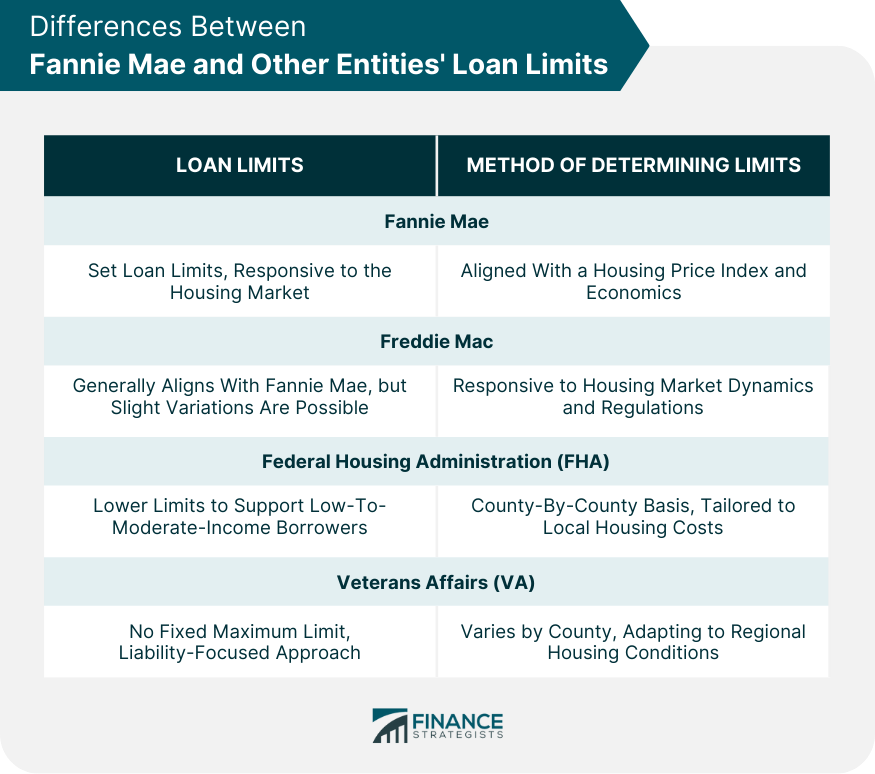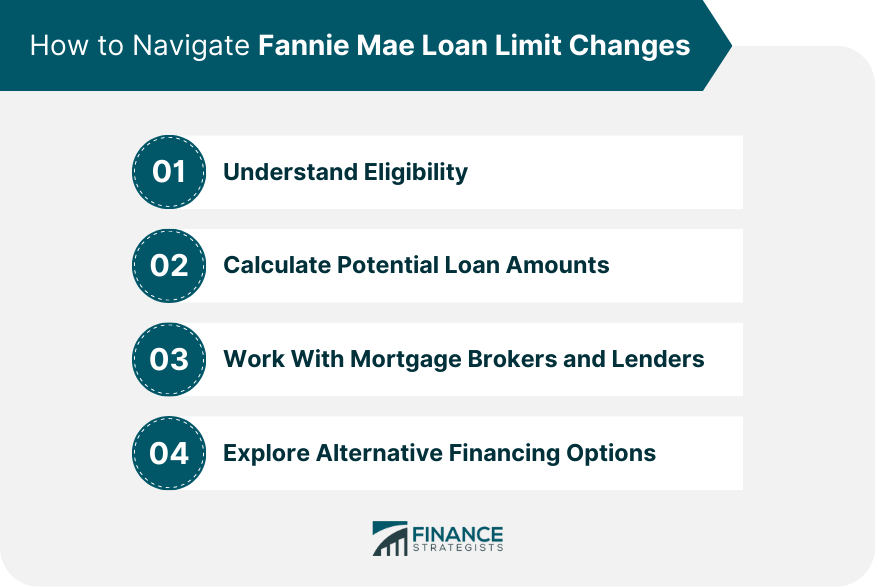The baseline limit for conforming loans stands at $766,550, serving as the maximum loan amount that Fannie Mae will acquire from a lending institution. In regions identified as high-cost areas due to their elevated residential prices, the conforming loan limit is increased to $1,474,400. These conforming loan limits are subject to annual adjustments, reflecting changes in the Consumer Price Index and fluctuations in housing prices. In 2024, these limits have seen a 5.56% rise compared to those of 2023. To illustrate, the 2024 conforming loan limits for some well-known locations are: Los Angeles County and Orange County: $766,550 New York City and San Francisco Bay Area: $1,149,825 Miami-Dade County: $795,000 For prospective homebuyers, it's vital to be aware of the conforming loan limits applicable in your area to understand if you qualify for a conforming loan. In instances where the purchase price of a home surpasses the conforming loan limit, a jumbo loan may be necessary. Note that jumbo loans, not backed by Fannie Mae or Freddie Mac, can pose stricter qualification criteria and carry higher interest rates. HERA was established in 2008 in response to the housing market collapse. It ensures that the baseline conforming loan limit adjusts annually to reflect changes in the average U.S. home price. This adjustment is vital to ensure that the purchasing power of consumers keeps up with the fluctuating housing market. The Housing Price Index is a broad measure of the movement of single-family house prices. It serves as a critical indicator for determining changes in loan limits. If the index shows a substantial increase, it can be a trigger for raising the loan limits in the subsequent year, such as what happened in 2024. Economic factors, such as inflation and changes in Gross Domestic Product (GDP), also play a role in setting loan limits. If the economy is strong and growing, people have more income to spend on housing, pushing up house prices and, subsequently, loan limits. Also directly affects housing prices. As the general price level rises, so too does the cost of housing. This, in turn, necessitates adjustments in loan limits to accommodate the increased costs. The inflation rate is, therefore, another key factor that influences the loan limit adjustments made each year. Loan limits directly affect a borrower's purchasing power. Higher loan limits can allow borrowers to afford homes in higher-priced markets, making the dream of homeownership more accessible. Higher loan limits can also affect down payment requirements. With a larger loan limit, borrowers may be able to finance a more expensive home with the same down payment percentage, reducing the amount they need to save upfront. Conforming loans typically come with lower interest rates than jumbo loans (those above the limit), another advantage for borrowers. When the loan limits increase, more loans fall into the 'conforming' category, potentially subjecting them to lower rates. The increase in loan limits impacts lenders' underwriting criteria. With higher loan limits, lenders may see a rise in the number of eligible borrowers, affecting their underwriting process. Higher loan limits also influence lenders' risk management strategies. Conforming loans are less risky for lenders because Fannie Mae or Freddie Mac can buy them. Thus, lenders might adjust their risk assessment strategies with changing loan limits. The adjustments in loan limits can aid lenders in diversifying their portfolios. With higher loan limits, lenders can issue more conforming loans, helping them balance their loan portfolios and spread risk. Freddie Mac, like Fannie Mae, has its set of loan limits. While they often align, there can be slight variations due to the dynamics of the housing market and certain federal regulatory measures. Both Fannie Mae and Freddie Mac are responsive to the same housing price index and prevailing economic conditions, ensuring that their limits are in sync with market realities. It's important for borrowers to monitor both organizations' limits, as the subtle differences might impact their loan choices. Furthermore, these minor distinctions can sometimes create different borrowing opportunities, depending on specific circumstances and the health of the housing market. The Federal Housing Administration (FHA) maintains a distinct set of loan limits, diverging from Fannie Mae's. Typically, FHA limits are positioned lower, reflecting the institution's mission to support low-to-moderate-income borrowers in achieving homeownership. A unique feature of the FHA is its method of determining limits, which is executed on a county-by-county basis. This approach allows for a more tailored response to local housing cost variations, making it more in tune with individual county housing markets. As a result, borrowers might find that in some areas, especially those with lower housing costs, an FHA loan could be more accessible. Distinctively, the Veterans Affairs (VA) doesn't set a fixed maximum loan limit for its home loan program. Instead, it focuses on limiting the liability it's willing to undertake for each loan. This method effectively establishes a de facto loan limit for a majority of borrowers. Similar to the FHA, the VA's loan "limits" can differ by county, reflecting the specific housing market conditions of each region. This flexibility ensures that veterans and military service members have access to home financing that aligns with local housing prices, allowing them to integrate seamlessly into communities across the country. Understanding your eligibility for different loan types is crucial. Fannie Mae's website provides a wealth of resources, including loan limit lookup tools that can help you understand the loan limits in your area and how they affect your eligibility. With changing loan limits, you may find that your potential loan amount has increased. You can use online mortgage calculators to determine your potential monthly payments, taking into account the new loan limits. A knowledgeable mortgage broker or lender can help you navigate the process and understand the implications of changing loan limits. They can provide insights into how the new limits might affect your loan approval and interest rates. If you find that you're not eligible for a conforming loan, even with the increased limits, there are other financing options available. Jumbo loans, FHA loans, and VA loans are all alternatives that might be worth considering. In 2024, Fannie Mae's loan limits saw a significant increase, reflecting the rising housing costs and bolstering borrowers' purchasing power. These changes allow for more loans to fall into the 'conforming' category, offering potentially lower interest rates. Key factors influencing these limits include the Housing and Economic Recovery Act (HERA), Housing Price Index trends, economic factors, and inflation. While Fannie Mae and Freddie Mac have similar loan limits, the FHA and VA adopt different approaches, often varying by county or by the liability they're willing to assume. Borrowers should be proactive: understanding their eligibility, using available resources to calculate potential loan amounts, and consulting mortgage brokers to navigate the ever-evolving loan landscape. By staying informed and exploring all financing options, borrowers can better position themselves in the dynamic housing market.Fannie Mae Loan Limits for 2024
Determinants of Fannie Mae Loan Limits
Housing and Economic Recovery Act (HERA)
Housing Price Index Trends
Economic Factors
Inflation

Impact of Loan Limits on Borrowers and Lenders
For Borrowers
Purchasing Power
Down Payment Requirements
Interest Rates
For Lenders
Underwriting Criteria
Risk Management
Portfolio Diversification

Differences Between Fannie Mae and Other Entities' Loan Limits
Freddie Mac
Federal Housing Administration (FHA)
Veterans Affairs (VA)

How to Navigate Fannie Mae Loan Limit Changes
Understand Eligibility
Calculate Potential Loan Amounts
Work With Mortgage Brokers and Lenders
Explore Alternative Financing Options

Bottom Line
Fannie Mae Loan Limits FAQs
The baseline conforming loan limit for 2024 is $726,200, while in high-cost areas, it increases to $1,089,300.
Loan limits are influenced by factors such as the Housing and Economic Recovery Act (HERA), Housing Price Index trends, economic conditions, and inflation.
Loan limits affect borrowers' purchasing power, down payment requirements, and interest rates. Higher limits can make homeownership more accessible and reduce upfront costs for borrowers.
The increase in loan limits can impact lenders' underwriting criteria, risk management strategies, and portfolio diversification.
Fannie Mae and Freddie Mac have similar loan limits, while the Federal Housing Administration (FHA) and Veterans Affairs (VA) have their own sets of loan limits, which can vary based on factors like income and local housing costs.
True Tamplin is a published author, public speaker, CEO of UpDigital, and founder of Finance Strategists.
True is a Certified Educator in Personal Finance (CEPF®), author of The Handy Financial Ratios Guide, a member of the Society for Advancing Business Editing and Writing, contributes to his financial education site, Finance Strategists, and has spoken to various financial communities such as the CFA Institute, as well as university students like his Alma mater, Biola University, where he received a bachelor of science in business and data analytics.
To learn more about True, visit his personal website or view his author profiles on Amazon, Nasdaq and Forbes.











